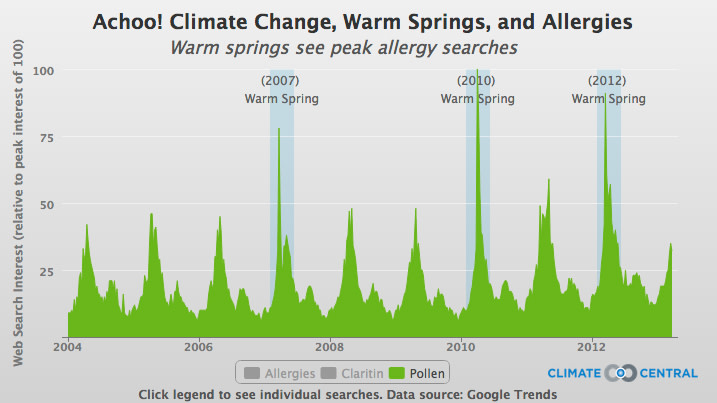Spring’s warm weather brings blooming flowers and trees, but their pollen is aggravating for people suffering from seasonal allergies. Around this time each year, in fact, web searches soar for things like “pollen,” “allergies,” and “Claritin.” This year is no different. During the past few weeks, Google web searchers for “pollen” have been rising, as illustrated in the interactive graphic above.
Years with mild winters, like 2007, 2010, and 2012, saw searches for “pollen” peak earlier and higher than other years and those spikes give us a glimpse of what allergies will be like in the future. As climate change brings spring earlier and earlier, seasonal allergies are likely to worsen.
Warmer temperatures have already begun to affect pollen seasons, causing them to start earlier and last longer. A 2011 study from the U.S. Department of Agriculture showed that since 1995, the ragweed pollen season has grown longer – as much as 13-to-27 days longer – across much of the U.S. In the spring, pollen from flowering trees causes most allergies, and already trees are blooming days, or even weeks, earlier now than they did several decades ago.
The rising concentrations of CO2 in the atmosphere are also affecting pollen production. CO2 helps stimulate plant growth, and several recent studies have shown that when plants are exposed to more CO2, they tend to produce more pollen.
Not every year will have an earlier pollen season than the one before, since the variability of weather patterns will bring surprises, such as this year’s ongoing cold and snowy March. But in the coming decades, the combination of warming temperatures and rising CO2concentration will likely worsen seasonal allergies.
